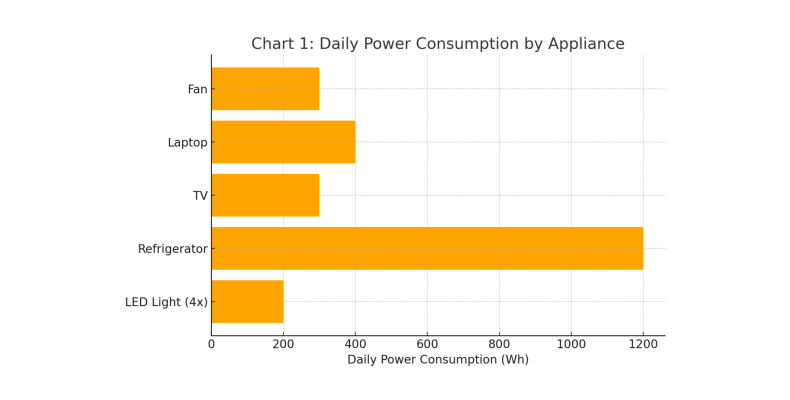
Sizing a solar system correctly isn't just about meeting energy demands—it's about ensuring reliability, maximizing return on investment, and protecting your solar infrastructure from avoidable failures. Whether you're powering a factory or a home, solar power system load calculation is the first and most critical step in design. In this guide, we break the process down and equip you with visual tools, real-world examples, and proven strategies for precision.
Why Load Calculation is the Heart of Every Solar System
Misjudging energy load can lead to one of two costly outcomes:
- Undersized systems result in frequent grid reliance, poor battery performance, and insufficient backup capacity.
- Oversized systems waste money on unnecessary panels and batteries, driving up initial costs with minimal gains.
A precise calculation allows solar businesses and EPCs to design systems that deliver high efficiency and client satisfaction.
Industry Insight:
According to IRENA, over 40% of small-scale solar installations are either underutilized or oversized due to inaccurate load estimates.
What Is Load in a Solar Power System?
Load refers to the total electricity demand that a system must support—measured in watt-hours (Wh) or kilowatt-hours (kWh) per day. Understanding this figure helps determine:
- How many panels are needed
- The required battery storage size
- The appropriate inverter capacity
- Whether the system can go off-grid or should remain grid-tied
Load Calculation Formula:
Daily Load (Wh/day) = Power Rating (W) × Hours Used × Number of Units
Step-by-Step Guide to Calculating Your Daily Load
Follow these five steps to get an accurate snapshot of energy usage:
1. Inventory All Electrical Devices
Include everything: lights, appliances, machines, computers, HVAC systems.
2. Estimate Daily Usage per Device
Use real-world operation schedules, not assumptions.
3. Calculate Daily Watt-Hour Consumption
Multiply device wattage by usage hours and quantity.
4. Sum Up Your Total Daily Load
This gives your baseline system requirement in Wh or kWh.
5. Add a Safety Margin (20–30%)
To account for inefficiencies, seasonal variations, and system losses.
Chart 1: Daily Power Consumption by Appliance
This chart visualizes how common household or office equipment contributes to the total daily energy load.

In this example, total usage amounts to 2,400 Wh/day, suitable for a 1.8–2.2 kW solar system with backup storage.
How to Translate Load into System Requirements
Once you know your load, align it with core components:
- Solar Panels:
Total daily load ÷ average sunlight hours = panel capacity needed. - Battery Storage:
Cover at least 1 day of autonomy (1.5× daily load is ideal for off-grid setups). - Inverter Sizing:
Inverters should handle at least 125% of the peak demand to prevent overload.
Chart 2: Estimated Daily Output by Solar System Size
This data visualization shows how much energy different solar array sizes produce under typical sunlight conditions (4 kWh per kW of panel per day).

Tip: Always verify actual solar irradiance for your region to adjust these averages.
Avoid These 5 Common Mistakes in Load Estimation
Solar developers frequently encounter system failures due to oversights in load design. Here are the most common traps:
1. Excluding Startup or Surge Power
Large appliances like refrigerators and pumps have peak power spikes.
2. Assuming Flat Usage
Energy demand fluctuates seasonally and daily—especially in commercial buildings.
3. Ignoring System Losses
Inverter, wire, and battery losses can eat up 10–25% of generated power.
4. No Margin for Growth
Future expansion, EV chargers, or home additions are often overlooked.
5. Overlooking Weather & Shading
Cloudy climates and shade can dramatically reduce effective solar hours.
Chart 3: Recommended Solar System Size Based on Load & Sun Hours
This chart helps EPCs and developers align system capacity with varying site conditions and demand profiles.

Use case:
A 10 kWh/day load in a region with 4.5 average sun hours/day needs a 2.5–3 kW system after accounting for losses and efficiency margins.
Real-World Case: Hybrid System for a Family of Five
Location: Southeast Queensland, Australia
Daily Load: 11.2 kWh
Designed System:
- 6.6 kW solar array
- 10 kWh LiFePO₄ battery
- 5 kW inverter (hybrid)
Performance Results (Year 1):
- Grid reliance: < 6%
- Energy bill reduction: 88%
- Payback period: 6.3 years
This outcome was only achievable through meticulous load analysis and weather-adjusted simulation modeling.
Pro Tools for Accurate Solar Load Planning
Professional system design requires more than spreadsheets. Here are the top resources used by solar engineers:
- PVWatts Calculator (NREL):
pvwatts.nrel.gov – Ideal for solar radiation and output modeling. - Sunpal System Designer (Beta):
Customized for both residential and C&I projects. - IoT Smart Plugs & Energy Monitors:
Devices like Sense or Shelly EM offer real-time usage tracking. - Sunpal Expert Support:
Engineering support for B2B partners available 24/7.
Conclusion: Right-Sizing Protects Your Investment
A solar system that's sized correctly—based on accurate load calculation, site data, and usage trends—is a system that performs for decades. It ensures your client gets exactly what they need without overspending or compromising reliability. For businesses, the impact is even greater: lower operational costs, higher ROI, and more predictable energy budgets.
At Sunpal, we help our partners design smarter systems with our technical expertise, planning tools, and world-class solar components.
